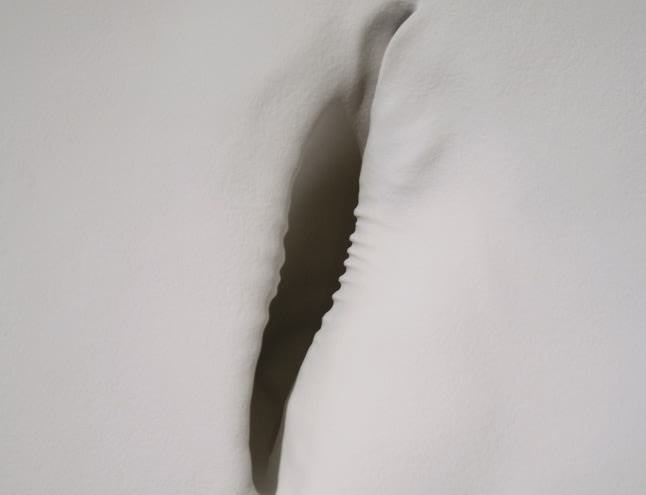
A. BALASUBRAMANIAM'S "In Between", at Talwar Art Gallery in Delhi, is a show that suggests some exciting new approaches to reinventing and recombining Post Minimalism's diverse strains, especially the emphasis on language and the use of dispersed, decentered installations. Taken together they say more about art today, more clearly, than most curated shows.
It is also interesting to recall that Bala was one of the first artists in India among the younger lot to begin installations in the minimalist, sparse idiom of creativity. His first show at British Council New Delhi presented by Prima Kurien was a heady assemblage of pipes and stark colors.
The brilliance of Bala lies in his ability to weave and manipulate time -fractured, layered, and circular -- ties together the work in fiberglass, wood, acrylic, magnet, and rust and the ground spokes of a cycle wheel. The very materials used are quaint and curious-like a meld of magical nuances. So, in many ways, Bala becomes a magician who gives in to a desire to achieve the physical presence of art objects, but without their fixed materiality -- he adds a sense of play to the moment by inviting the viewer to go beyond being an observer and become a participant. Images are still, and artistic experience is filtered through the framework of psychology and a sense of biographical essence.
It is worth noting -- that his work called Oomph was created from welded cycle spokes in which he tells and retells, to an almost obsessive degree, a tale that weaves together his incessant travels, personal experiences, and artistic pursuit of history.
What ensues is an immersive experience of images, sounds, and personalities that blurs fact and fiction, medium and message. Impressive, how a whole decade later, Bala's works seem to take a spoke at something like the speed of thought, in a way that reflects the brain's very synapses, in an imaginative sojourn of sorts.
This succinct exhibition of work makes everything, familiar or not, look fresh and relevant. Bala is known for its quiet, elegantly elusive sensibility. That's interesting information, but this show transcends personal connections.
The industrial tools and elements that Bala puts to the service of making excruciatingly pristine, techno futurist art brings back an echo of embodied broken-down domestic machinery.
Juxtaposed with works in fiberglass, these works assume a strange aura of suspended animation. They've been plucked from one familiar commercial system of economic exchange and inserted into another-- the market for durable goods detoured into the market for durable art. The show leaves us with one question -- Which is a more valuable path to take: replication, transformation, or a metamorphosis?
-Uma Nair